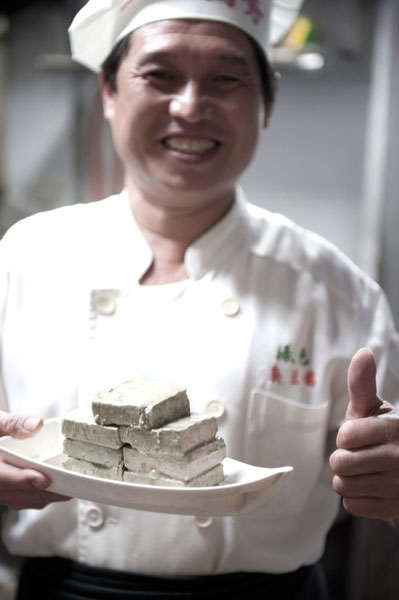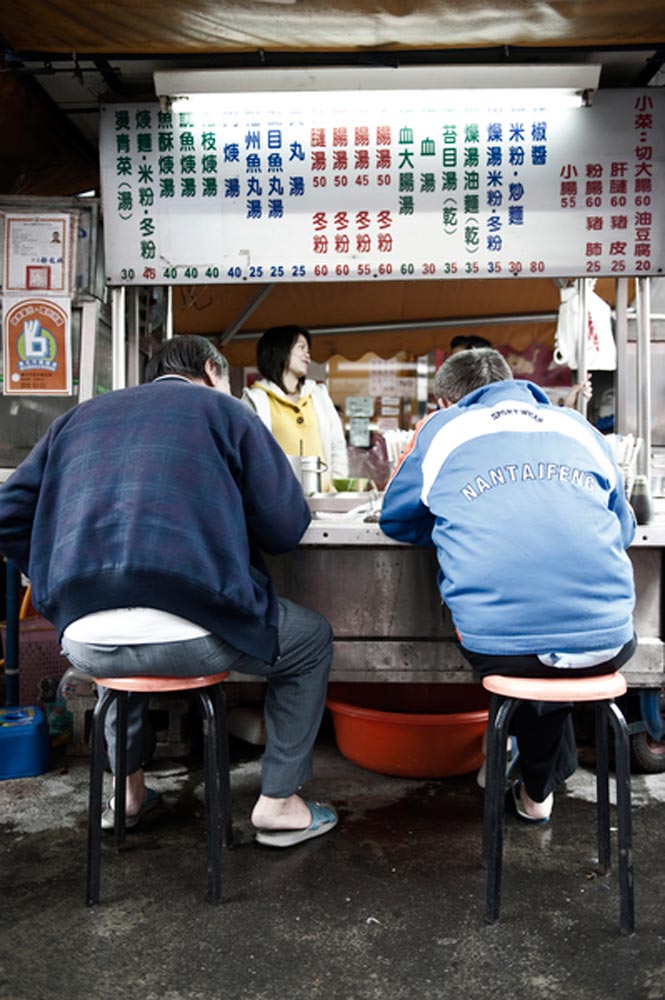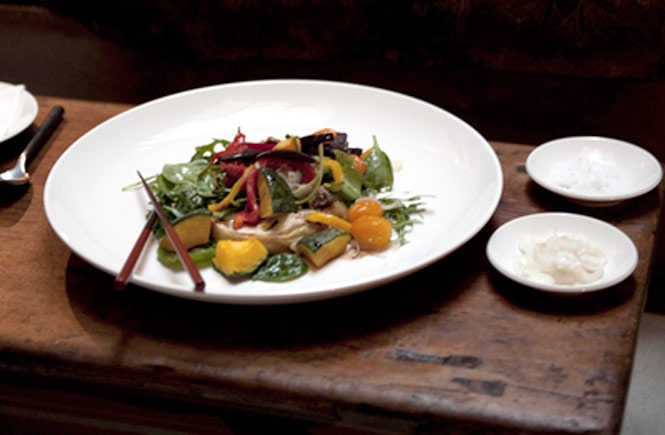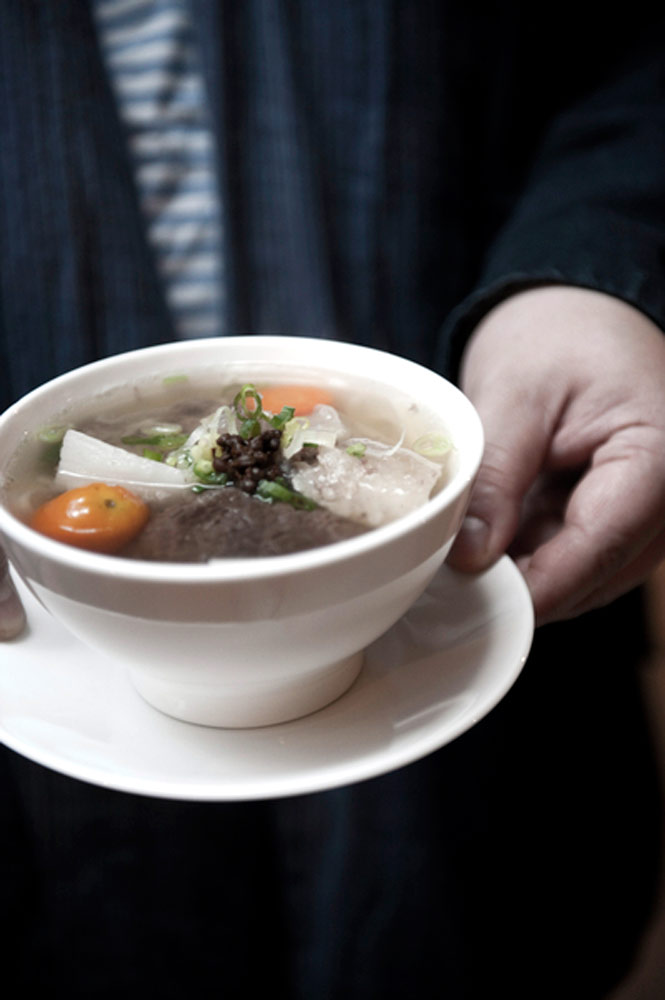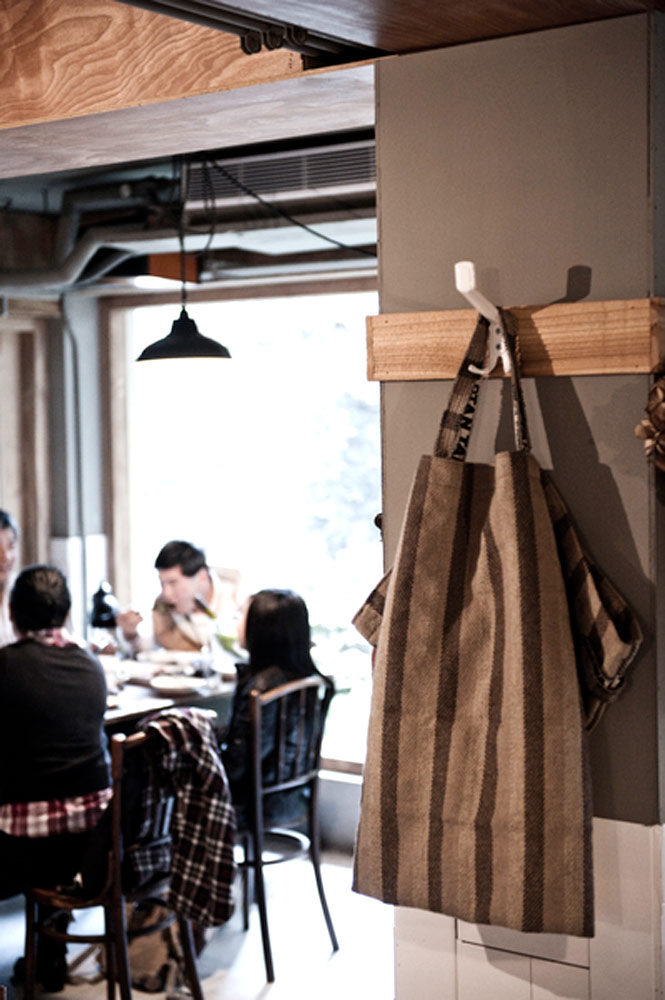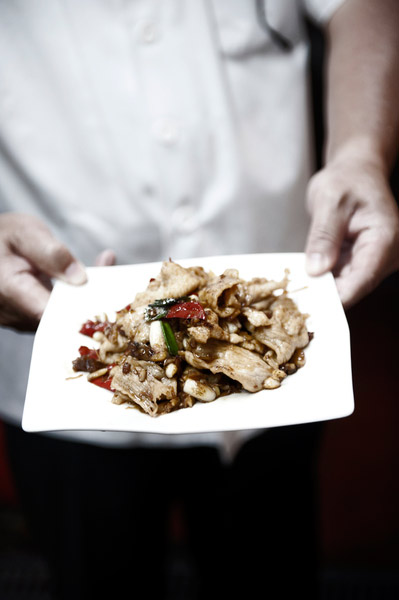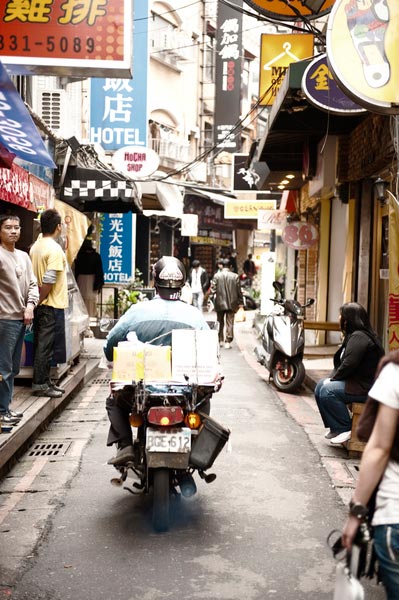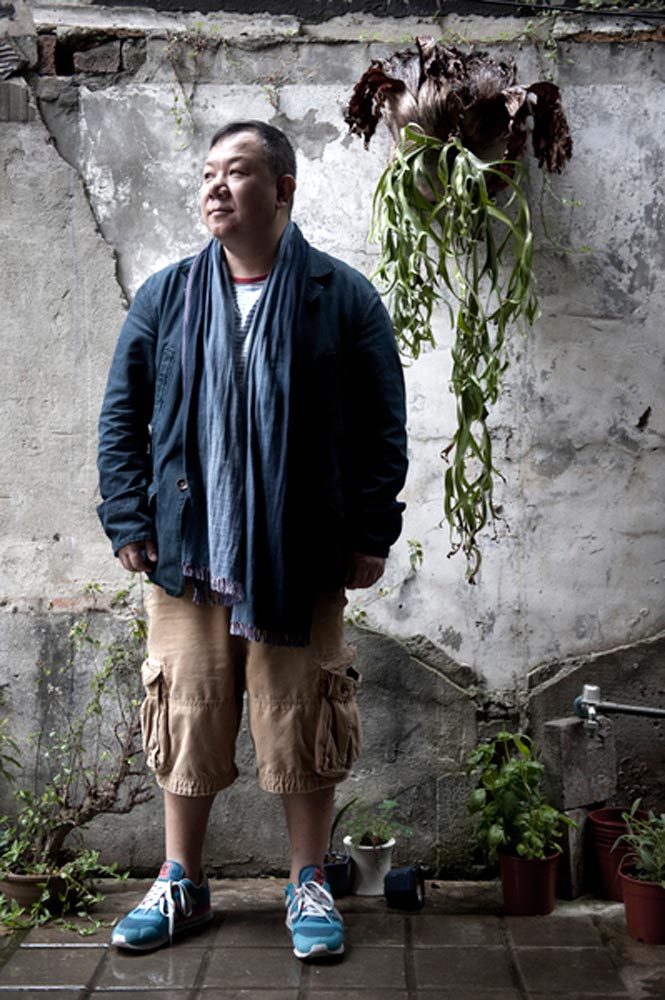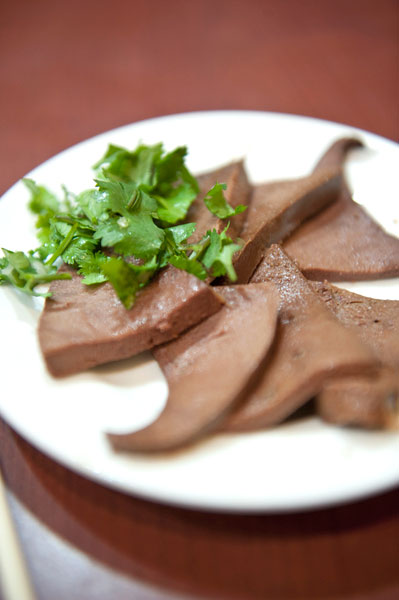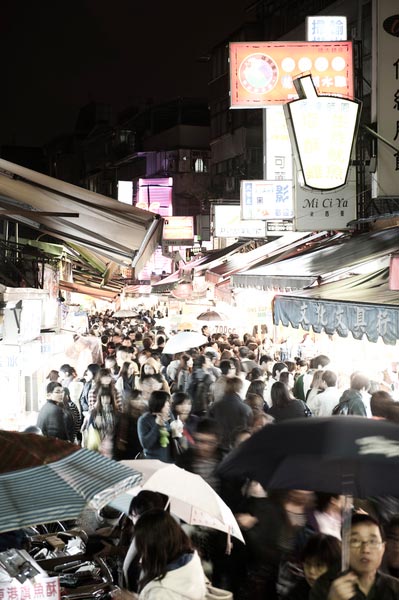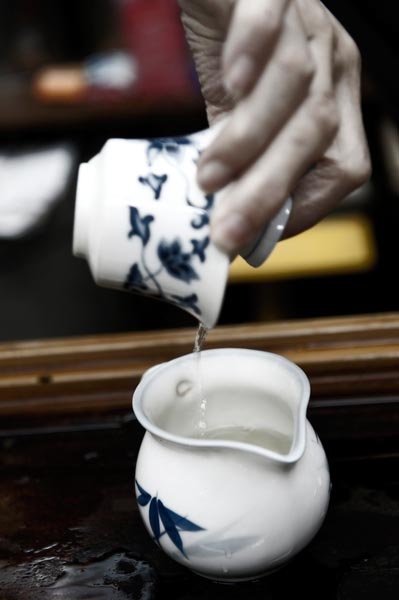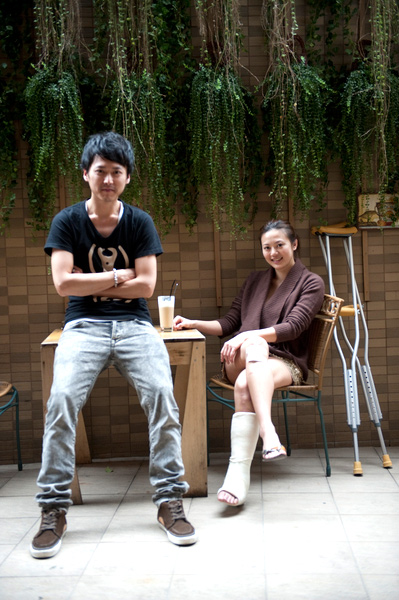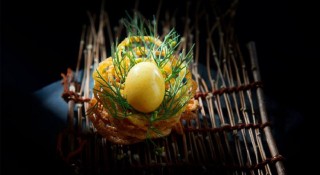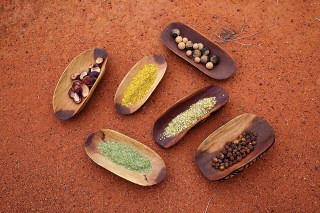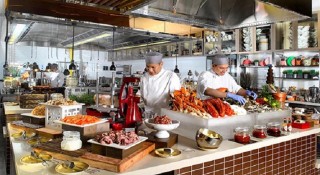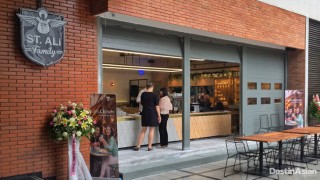Above: Local produce shines in an organic salad at Four Senses.
From its iconic beef-noodle soup to the myriad offerings dished up at the Shida Night Market, Taiwan’s capital remains the ultimate destination for Chinese cooking
By Jarrett Wrisley
Photographs by Jason Michael Lang
Imagine a city, floating inside a bowl of soup. Not just any soup, mind you, but a steaming assemblage of noodles, broth, and brisket. It’s a dish synonymous with Taipei, and like most things in this food-obsessed town, niu rou mian—beef-noodle soup—is more than the sum of its parts. Unrecognizable now to its forebears across the Taiwan Strait on the Chinese mainland, this iconic dish is seasoned with a whiff of colonialism, a dash of despair, and several slices of promise. Political upheaval and new beginnings flavor its murky broth. So look down, breathe in the star-anise-and-cassia-scented steam, and picture a younger Taipei reflected on the grease-shine surface. Because it’s impossible to think about food in the Taiwanese capital without considering the unique forces that shaped it.
I arrived in Taipei at an inauspicious time. A typhoon had just raged across the island, deluging its rugged southern folds. When I crossed the Danshui River from the airport, it was bulging at its banks, like a glass filled to spilling. But the city of Taipei was unchanged—its streets, saturated in a bright nighttime glow, whipped by the taxi’s window like overexposed photographs. I crossed though East Taipei—with its Tokyo-meets-Manhattan mix of boutiques, wide avenues, hidden lanes, and paper lanterns—and into the city’s dim, older quarter near the main train station. In Taipei, you can go from tomorrow to yesterday in just a few blocks.
I dropped my bags at the hotel and rushed straight to dinner, to a restaurant called Rong Rong Yuan. I found it down a narrow alley, and arrived in time for the kitchen’s last call, at only half past eight. In the corner, I spotted the familiar face of Wu’er Kaixi; he was one of the student leaders during the Tiananmen Square protests of 1989, and I had seen him in press photographs. In the crackdown that followed, Kaixi fled China, first moving to France, and later the U.S., before settling in Taiwan. He now lives here in exile, working as an investment banker and a political commentator. But he also has a deep knowledge of Chinese cooking—Kaixi is a great lover of food and drink—and that’s what led me to seek him out.
“I want to tell you that Taiwan’s food culture is different than China’s in three ways,” he said when I had sat down. “Firstly, Taiwanese food is not used to intimidate or impress. People don’t eat the price tag. Secondly, it is a friendly and hospitable food culture; restaurant owners really need to make customers happy, because there is so much competition. And third, it is creative. Chefs put their own spin on dishes here more often than in China. They innovate.”
I used to live in Shanghai, many foggy kilometers north of China’s Zhejiang province, the ancestral home of the restaurant in which we were eating. I asked my host why he chose to take me here, rather than to a place serving mainstream Taiwanese cuisine. He smiled. “Like all things in Taiwan, food comes down to politics. Chiang Kai-shek was from Zhejiang, and when he and the Nationalists crossed the Taiwan Strait in 1949, his native food came with them. It is still the stuff of government banquets and important business affairs—this is the de facto fine dining of Taiwan. It’s a good place to start.”
This subtle, seafood-focused cuisine was in good hands with the chef at Rong Rong Yuan. Drunken crabs—pickled in a brine of Shaoxing wine and salt—were clean and sweet, and a dish of crispy eel came with a deftly balanced sauce of ginger, soy sauce, sesame oil, and sugar. We finished our meal with a bowl of yan du xian soup: a clay pot containing milky pork stock with chunks of cured Jinhua ham, fresh pork belly, and tender bamboo plucked from nearby mountainsides. The freshness of the bamboo cut through the deep saltiness of the stock, and the broth’s pure, countryside essence was still swimming in my head as a taxi took me home. I wondered what might come tomorrow.
The Xinmending area of west-central Taipei, where I headed the following day, felt eerily familiar. Perhaps it was the elbow-to-elbow crowds and the blinking and blaring retail, which called to mind the noisy commerce of the Chinese mainland. Or maybe it was the sight of the octagonal, crimson-bricked Red House Theater, built by the Japanese in 1908 and so reminiscent of Shanghai’s colonial-era grandeur.
That afternoon I ate at Zhong Fu Yuan, a restaurant whose second floor overlooks the 2-28 Peace Memorial Park. This emerald-green square, called Taihoku Park during Japan’s five-decade occupation of the island, commemorates the massacre of Taiwanese protesters here by Kuomintang soldiers on February 28, 1947, just two years after the end of Japanese rule.
Zhong Fu Yuan started making its you bao cai—literally, “fried bread food”—in 1983, when the country was still under martial law. Taiwan has changed considerably over the intervening decades, but not this dish. It begins with balls of dough that are pulled and slapped to crepelike thinness, and then fried and wrapped around a dainty filling of threaded beef, leeks, ginger, and green pepper. It recalls the Hui stir-fries of western China, but is greaseless and delivered with the sort of measured precision one might expect from a Japanese kitchen.
Later, I stopped for a snack at Ya Rou Dian. This might be Taipei’s most famous spot for roast goose, a simple, rustic dish brought over by migrants from China’s Fujian province, just across the Taiwan Strait. The restaurant’s name—Duck Meat Place—is pretty misleading for an establishment that only serves sliced, saltwater goose with pickled ginger and rice noodles. But judging from the crowds who fill its small tables on their way home from work, no one seems to mind.
Most chefs don’t cook in gold miniskirts. But then, most chefs didn’t start their careers modeling in Miami and New York. When I arrived at her restaurant—a little trattoria called PS Italia, situated down an East Taipei alleyway—Monica Shieh was vigorously scrubbing the grill and preparing a tray of meatballs and marinara for the oven, in what looked like nightclub attire. I felt guilty sitting there, sipping my cappuccino as she slaved away on a Saturday afternoon.
Appearances aside, Shieh is the real thing: a young Taiwanese chef and restaurateur dedicated to her craft. She’s opened two restaurants here, PS Italia and a Spanish place just up the street called PS Tapas. Shieh, and people like her, are updating Taipei’s dining scene one trattoria and bistro at a time.
“People here are tired of eating only Chinese food. We’ve been abroad, we’re young, we’re stylish,” she told me. Stroll around her neighborhood—a neon-lit warren of designer studios, coffee houses, streetwear boutiques—and you might think you’ve landed in Tokyo rather than Taipei. The scene is moving forward so fast you can feel it.
But Shieh wanted to take me back rather than forward—to Tung Fah, where three generations of her family have come to snack. As we entered, Shieh bowed to a shrine that sat out front.
“Only three dishes are served here: rou gen tang, a pork soup made from special, black-skinned pigs that is thickened with sweet potato starch; zima you fan, toasted sesame oil and sticky rice with ginger; and haoji mi suan, thin rice noodles in a thickened soup with tender, quickly simmered oysters and a spoonful of homemade chili sauce. Let’s try them all!” she said ecstatically.
“I can still remember when all the restaurants in Taipei had two floors,” she went on as we dug into lunch beside one of the owners, who was disappearing behind a growing pile of shredded bamboo. “On the first floor there was the restaurant itself, and on the second, that was for the family. It’s where many Taipei people grew up. You could say the restaurant business is in our blood.”

